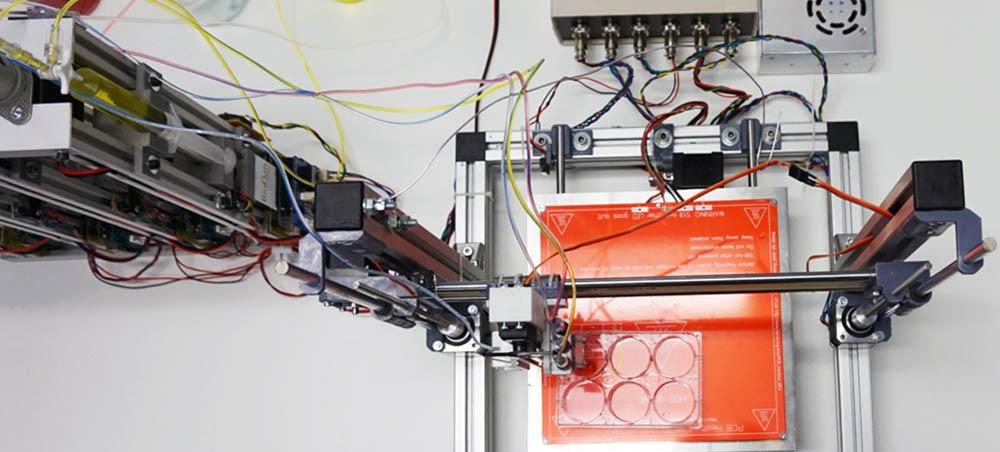Newsletter Signup - Under Article / In Page
"*" indicates required fields
Scientists in Spain have created a 3D printer that uses bioink to recreate authentic human skin for drug testing and regenerative medicine applications.
Researchers from the Universidad Carlos III de Madrid (UC3) and collaborators, including the Spanish bioengineering firm BioDan, have presented a prototype of a 3D printer that can create completely functional human skin. An industrial model could be ready as soon as two months from now.
The 3D printed skin produced at UC3 is intended for transplants in patients with severe burns and to replace animal testing of drugs and cosmetics. The printer can recreate authentic human skin with two distinct layers that mimic the structure of the epidermis and dermis naturally found in our skin.
In a recent paper published in the journal Biofabrication, the team claims that their prototype can create 100 cm2 of 3D printed skin in less than 35 min. That is, once enough amounts of cells have been grown in the lab, a process which can take several weeks. The automation of the process contributes to obtaining uniform batches at a reduced cost over current manual production methods.
The technology is currently awaiting approval from European regulatory agencies, and BioDan expects the product to hit the market in a few months. The bioengineering company, which sells lab-made human skin products, has licensed the patents for the bioinks used in the 3D printing process from the Center for Energy, Environmental and Technological Research (CIEMAT), a public institution in Spain collaborating in the project.
Bioengineers have been trying to recreate human tissues for a long time. In particular, skin is very attractive since its reduced thickness facilitates growing it in a petri dish, and the applications are multiple. Companies like Organovo and MatTek in the US are already selling lab-grown human skin to replace animal testing.
For regenerative medicine applications, impressive technology like the SkinGun from RenovaCare, which sprays the patient’s own stem cells over wounds and burns for rapid healing. The new 3D printing prototype at UC3 builds on these concepts to create an automated process to reduce costs and the time required to obtain skin, either from donors or from the own patient.
This will definitely not be the last 3D printer used to recreate human skin or any other human tissue or organ in the coming years, opening up a whole new world of possibilities for both drug testing and regenerative medicine.
All images from UC3






